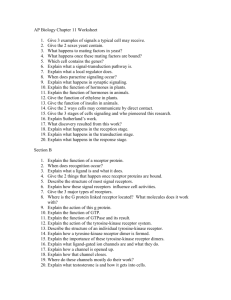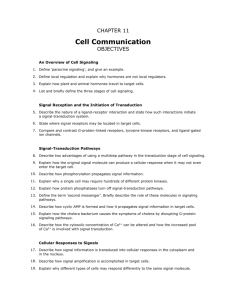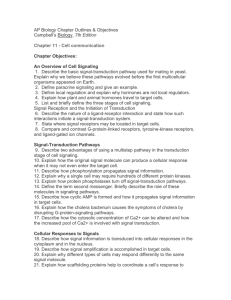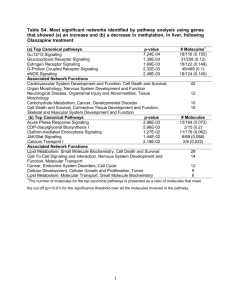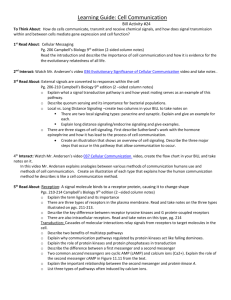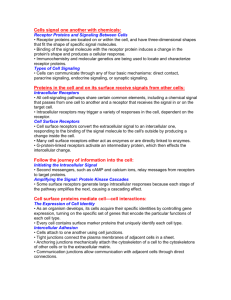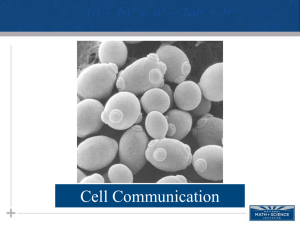Worksheet on Cell Communication
advertisement
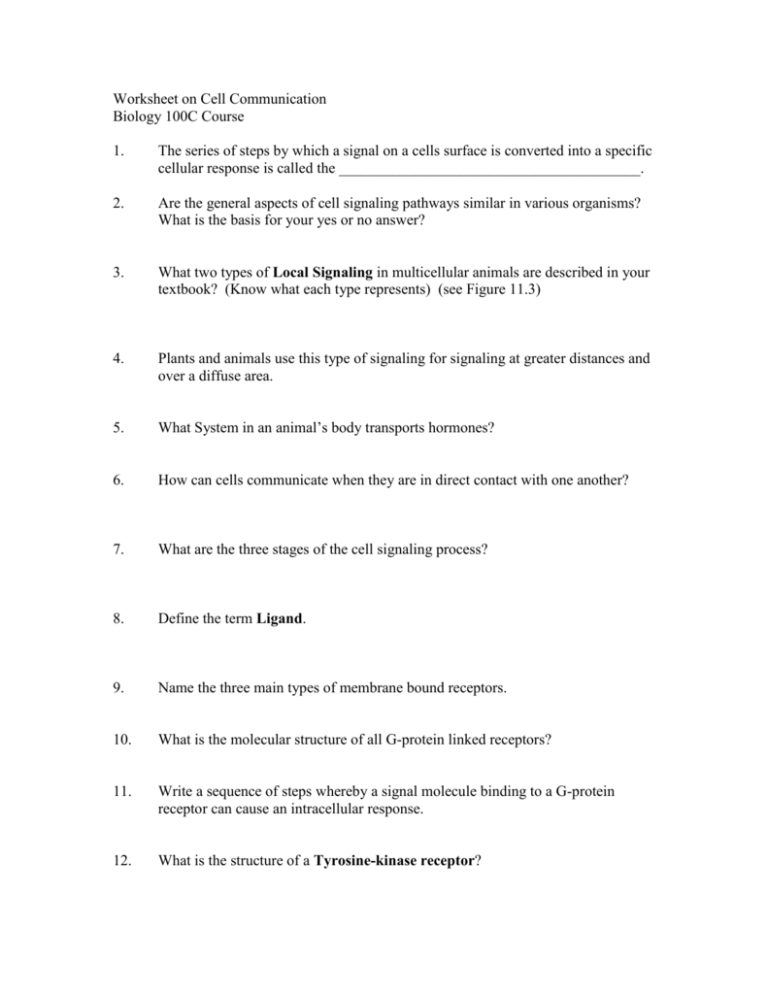
Worksheet on Cell Communication Biology 100C Course 1. The series of steps by which a signal on a cells surface is converted into a specific cellular response is called the ________________________________________. 2. Are the general aspects of cell signaling pathways similar in various organisms? What is the basis for your yes or no answer? 3. What two types of Local Signaling in multicellular animals are described in your textbook? (Know what each type represents) (see Figure 11.3) 4. Plants and animals use this type of signaling for signaling at greater distances and over a diffuse area. 5. What System in an animal’s body transports hormones? 6. How can cells communicate when they are in direct contact with one another? 7. What are the three stages of the cell signaling process? 8. Define the term Ligand. 9. Name the three main types of membrane bound receptors. 10. What is the molecular structure of all G-protein linked receptors? 11. Write a sequence of steps whereby a signal molecule binding to a G-protein receptor can cause an intracellular response. 12. What is the structure of a Tyrosine-kinase receptor? 13. How is a Tyrosine-kinase receptor activated? 14. What does a Tyrosine-kinase receptor do once it is activated? 15. What is a ligand-gated ion channel? 16. Are all receptors located on the cell membrane? Explain your answer and if no, indicte which molecules may interact with these non-membrane receptors. 17. What two sex hormones does your book indicate bind to receptors located in the cytoplasm or nucleus? 18. When testosterone binds to a receptor in the cytoplasm the complex goes into the nucleus of the cell and turns on _____________________________. 19. Special proteins that control which genes are turned on are called ____________________________________ 20. What action is a widespread mechanism for regulating protein activity? 21. What is a Protein Kinase and why are they important? 22. What is a Protein Phosphatase and why are they important? 23. What are Second Messangers 24. Why can second messengers spread rapidly throughout the cell? 25. What types of signaling pathways use second messengers? 26. What are the two most common second messengers? 27. How is cyclic-AMP formed? (see also Figure 11.12) 28. What is the immediate effect of cyclic-AMP once it is produced? 30. Why doesn’t cyclic-AMP keep working all of the time the cell is alive? (see Figure 11.12) 31. What role does the second messenger cyclic-AMP play in the disease Cholera? 32. Can some first messengers decrease cyclic-AMP production? If yes, how? 33. Calcium is used as a second messenger in these signaling pathways. 34. Why can calcium ions be used as a second messenger? Where are most of the calcium ions in a cell? 35. Describe the pathways that can lead to the release of calcium from the endoplasmic reticulum. (see text and also Figure 11.14) 36. How could a signaling pathway be involved in activating genes on the chromosomes? 37. What is Signal Amplification? 38. What determines the specificity of a particular cell for a specific cellular response?

